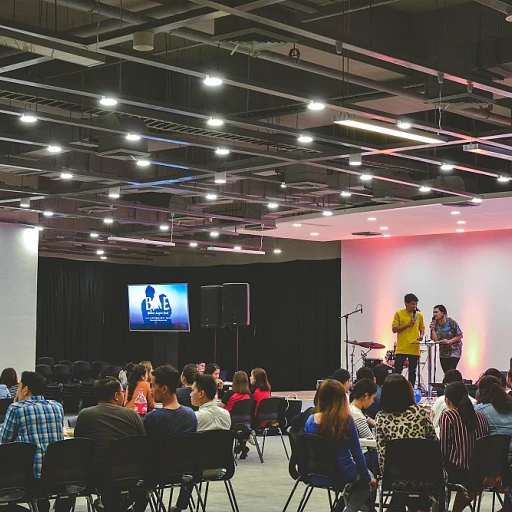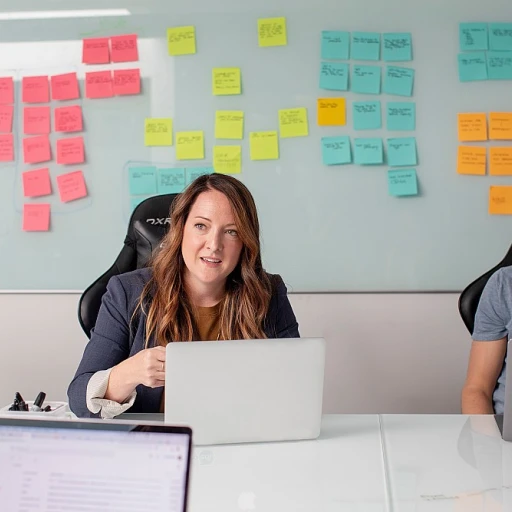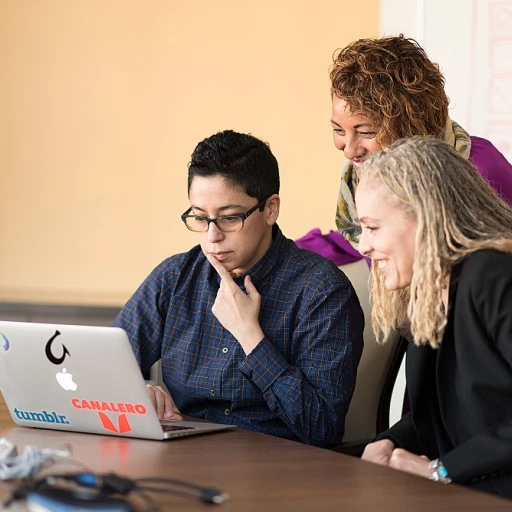
Understanding Continuous Learning
Unlocking the Potential: What Continuous Learning Means
Continuous learning is the process of constantly expanding and honing one's knowledge and skills over time. With the ever-evolving landscape of technology and information, engaging in continuous learning has become more important than ever. Whether you're a student trying to stay ahead, a teacher looking to enhance your teaching methods, or a professional aiming for progress, this concept opens a window of opportunities across various stages of life. In the current patchwork of education and professional development, engaging in continuous learning includes embracing new languages, exploring diverse teaching methods like the ESA method, and participating in various learning activities. According to experts in education, the study phase and engage phase form the foundational elements of effective continuous learning. They lay the groundwork for the subsequent activate phase, during which learners apply what they've absorbed in practical, real-world scenarios. For students and educators alike, the path to successful learning often involves language learning and teaching English as part of the process. It transforms learners into well-rounded individuals capable of adapting to and thriving in different environments. Engaging with different learning materials and techniques helps activate your learning journey, bringing a lifelong impact on personal and professional growth. To explore how you can master leadership through continuous learning, consider visiting this mastering leadership through continuous learning article that delves deeper into this essential aspect. Continuous learning is not just about accumulating knowledge; it’s about integrating new insights, engaging with diverse learners, and sharing experiences on platforms like Facebook. The process naturally encourages collaboration and innovation, fostering an environment where sharing becomes a fundamental part of growth. Whether you are in the engage study phase or preparing for the activate phase, embracing these principles can set you on a path to success, opening up a myriad of possibilities in both personal and professional arenas.Engage: Finding Your Motivation
Finding the Drive to Learn
Continuous learning is a lifelong commitment, and the journey begins with finding your motivation. Much like students who eagerly anticipate a new language lesson, the first step involves the curiosity to engage in something that broadens your horizon. Whether you are opening a new window to understanding or embarking on the next phase of professional growth, the kernel of your learning journey is motivation. Aligning your learning with personal goals or interests can help sustain engagement. For example, language learners and those passionate about teaching English often find the ESA method—a structured approach involving Engage, Study, and Activate phases—particularly effective. This method not only keeps learners focused but also allows them to engage with the content meaningfully.Engage with What Sparks Interest
Activating motivation requires identifying activities and subjects that genuinely engage you. During an engage phase, your aim is to weave a patchwork of stimulating elements that resonate deeply. This is crucial for setting the stage for effective study later on. Teachers adept at lesson planning often share techniques to captivate students, demonstrating how emotional engagement can lead to successful outcomes. Social media platforms, like Facebook, opens a window to a world of shared knowledge and peer-to-peer interaction. By joining groups and discussions, learners can enjoy a community atmosphere where insights are shared and motivation is constantly replenished. For those seeking structured guidance, looking into associations that aim at professional growth might open new doors. Platforms such as the Houston Women's Leadership Association provide excellent opportunities to connect with mentors and role models, offering a valuable source of motivation and inspiration. To learn more about empowering your journey through such associations, please visit this link. Embarking on a learning journey is a conscious choice. It demands an understanding of what motivates you as a learner and finding the methods to engage deeply with subjects of interest. Once this foundation is laid, transitioning to more intensive study activities becomes a seamless experience.Study: Building Effective Learning Habits
Building Positive Learning Habits
As learners embark on their continuous learning journey, developing effective study habits becomes a cornerstone of success. This phase is essential for students and professionals aiming to optimize their learning activities. By adopting strategic and adaptable methods, learners can better engage with their study material and achieve their educational objectives.
One widely used teaching method to enhance learning motivation is the ESA (Engage, Study, Activate) method. This approach is particularly popular in language teaching, especially when it comes to teaching English. The ESA lesson structure opens the learning window by first engaging students, guiding them through the study phase, and finally helping them apply their knowledge in the activate phase. Adopting this method ensures a comprehensive understanding of the material and promotes long-term retention.
Finding Routine in Language Learning
A consistent routine is vital for successful language learning, as it offers structure and direction. By setting aside dedicated time for daily practice, students can steadily improve their language skills. Incorporating diverse activities, such as listening to podcasts, reading English-language books, and participating in conversation classes, helps to keep learners engaged and motivated.
Moreover, effective lesson planning plays a crucial role in enhancing students' engagement. Teachers should aim to create a patchwork of stimulating exercises that cater to different learning styles. By diversifying teaching methods, educators can better capture the interest of their students, facilitating a deeper understanding of the language.
Sharing Knowledge Through Community Involvement
Integrating social elements into the study phase can also enhance learning experiences. Encouraging students to share their knowledge and insights on platforms like Facebook opens new avenues for discussion and collaboration. By engaging in such community activities, learners can benefit from diverse perspectives and collective wisdom, enriching their own understanding of the subject matter.
To further refine your learning journey, consider crafting a personalized annual learning strategy that aligns with your personal and professional goals. This approach ensures that you stay focused and motivated, making the most of your learning experiences.
By fostering effective learning habits, engaging with communities, and leveraging the ESA method, learners can navigate the complexities of continuous learning and reach their full potential.
Activate: Applying What You Learn
Transforming Knowledge into Practice
To truly benefit from the concept of continuous learning, activating your knowledge by putting it into practice is vital. During this phase, learners often face the challenge of moving from theoretical understanding to real-world application. Let's explore how you can overcome these challenges and effectively transition from learning to doing, ensuring that your newly acquired skills make an impact.- Embrace the ESA Method: The ESA (Engage, Study, Activate) method, widely used in language teaching, is a structured approach that guides English language students through an engaging lesson. By moving through each phase, the teaching method ensures that learners not only engage with the material but also put their theoretical knowledge to practical use. Implementing the activate phase means taking what you've learned and applying it in a variety of real-life scenarios, which can open a window of new opportunities.
- Interactive Activities and Practical Exercises: Transitioning from study phase to activate phase often involves interactive activities or exercises. Teachers and students alike can benefit from role-playing scenarios, simulations, and other hands-on experiences that reinforce learning. These activities not only reinforce teaching methods but also help learners retain information and understand its practical application.
- Sharing and Reflecting: Sharing your insights and progress with others, whether through a patchwork of written reflections or discussions on platforms like Facebook, helps solidify your understanding. Moreover, it develops a community where lessons and experiences are shared, broadening the collective knowledge pool.
- Continuous Adaptation: Continuous learning is a dynamic process. As you apply what you've learned, be prepared to adapt and refine your methods. This iterative approach allows students to develop their own strategies and innovations, tailored to their personal learning journey. Language learning, for instance, becomes not just about understanding rules but about finding new ways to engage students and communicate effectively.
Overcoming Challenges in Continuous Learning
Embrace Challenges with Adaptability
In the landscape of continuous learning, challenges are inevitable. As learners, teachers, or even students navigating the complex phases of engage, study, and activate, it's crucial to cultivate an adaptable mindset. By doing so, we open the window to innovative problem-solving and skill enhancement, transforming perceived obstacles into opportunities for growth.Common Hurdles and Practical Solutions
Continuous learning presents a range of challenges. Here are some common hurdles paired with practical solutions:- Lack of Motivation:
- *Solution:* Engage students by incorporating activities that are relevant to their interests. Language learners, for example, can benefit from language teaching techniques that keep lessons enjoyable and stimulating.
- Time Management:
- *Solution:* Structure a lesson plan using the ESA (Engage, Study, Activate) method. This approach helps to break down lessons into manageable segments, making learning more efficient.
- Overcoming Language Barriers:
- *Solution:* Utilize teaching methods that emphasize practical language exercises. For teaching English, interactive coursework and real-world language applications can significantly enhance comprehension.
Interactive Learning Technologies
Today's digital era offers numerous technological tools to help overcome learning challenges. These tools not only enhance the learning experience but also facilitate greater interaction:- Online Collaborative Platforms: Connecting with peers or mentors via platforms like Facebook facilitates a community-driven learning environment where learners can share insights and support.
- Language Learning Apps: Apps that incorporate gamified elements enhance engagement and make repetitive practice exercises more enjoyable.
Transform Challenges into Growth Opportunities
When learners and educators alike embrace challenges, each phase of their learning journey becomes a patchwork of invaluable insights and experiences. By adopting the right teaching methods and technological tools in every stage of lesson planning, you can significantly elevate the students' learning process. Remaining adaptable and persistent allows learners to not only overcome obstacles but use them as stepping stones toward success in their continuous learning endeavors.Leveraging Technology for Continuous Learning
Unlocking the Potential of Technology in Learning
In today's rapidly progressing world, technology stands as a critical tool in continuous learning, offering students and educators alike unprecedented resources and opportunities. Whether you're engaging in language learning or mastering new teaching methods, technology can significantly enhance your study phase and activate phase experiences.
One powerful method is the integration of digital tools into lesson planning. The use of apps and platforms allows teachers to provide tailored activities that meet the diverse needs of students. For instance, in English language teaching, these tools open a window to countless resources that can engage students and facilitate their learning journey through the esa engage method.
Moreover, technology in language teaching provides a patchwork of methodologies that enrich the learning experience. Interactive platforms make it easier for learners to participate actively in lessons, fostering a more dynamic esa lesson environment. Through these platforms, learners can share their progress, exchange ideas with peers worldwide, and develop collaborative skills vital in today's interconnected world.
The ESA method, particularly the engage phase and activate phase, benefits substantially from these technological advancements. During these stages, students can access a plethora of multimedia resources. Videos, podcasts, and language apps serve as complementary teaching methods that reinforce language acquisition and retention.
Whether it is through engaging study apps or virtual classrooms, technology offers a flexible approach to continuous learning, adapting to individual learners' needs and opening new pathways for educational growth. As the use of technology in education continues to expand, the necessity of keeping up with digital trends becomes evident for both teachers and students aiming to succeed in their respective learning journeys.












